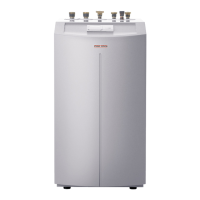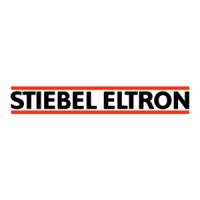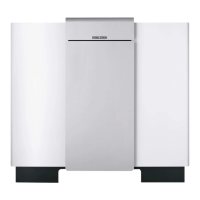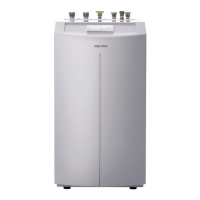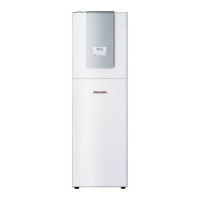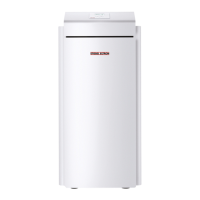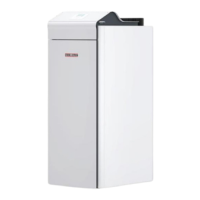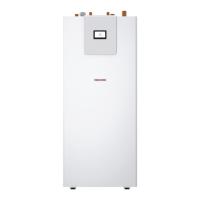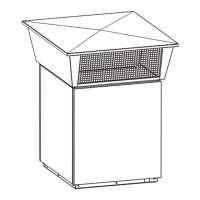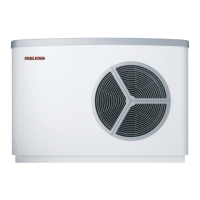OPERATION
Safety
www.stiebel-eltron.com WPF | WPF cool | 5
2. Safety
2.1 Intended use
The appliance is designed for:
- heating rooms
- DHW heating
Observe the operating limits listed in chapter "Specification".
This appliance is intended for domestic use. It can be used safely
by untrained persons. The appliance can also be used in a non-do-
mestic environment, e.g. in a small business, as long as it is used
in the same way.
Any other use beyond that described shall be deemed inappropri-
ate. Observation of these instructions and of instructions for any
accessories used is also part of the correct use of this appliance.
2.2 Safety instructions
- The electrical installation and installation of the heating cir-
cuit must only be carried out by a recognised, qualified con-
tractor or by our customer service engineers.
- The qualified contractor is responsible for adherence to all
currently applicable instructions during installation and
commissioning.
- Operate the appliance only when fully installed and with all
safety equipment fitted.
- Protect the appliance from dust and dirt ingress during
building work.
!
WARNING Injury
The appliance may be used by children aged 8 and up and
persons with reduced physical, sensory or mental capa-
bilities or a lack of experience and know-how provided
that they are supervised or they have been instructed
on how to use the appliance safely and have understood
the resulting risks. Children must never play with the
appliance. Children must never clean the appliance or
perform user maintenance unless they are supervised.
Note
Do not change any system-specific settings at the control
unit. Your contractor has set the control unit to match
the local conditions for your building and your individual
requirements. The system-specific parameters are pro-
tected by a code scan so they cannot be unintentionally
modified.
The parameters that serve to match the appliance to your
personal requirements are not protected by a code scan.
2.3 Test symbols
See type plate on the appliance.
3. Appliance description
The appliance is a heating heat pump suitable for operation as a
brine/water heat pump. The heat pump extracts energy from the
heat source medium at a low temperature level. This extracted
energy is then transferred to the heating water at a higher level,
enriched by the electric energy drawn by the compressor. Subject
to the heat source temperature, the heating water can be heated
up to a flow temperature of 65 °C.
The heating circuit pump, a multi function assembly (MFG) with
safety assembly and a three-way valve have been integrated in the
appliance for diverting the flow either to the heating circuit or the
DHW circuit. DHW is heated by pumping the heating water, which
has been heated by the heat pump, through an indirect coil in the
DHW cylinder, where it transfers its energy to the DHW.
The appliance is equipped with an electric emergency/booster
heater (DHC). If the dual mode point can no longer be maintained
in mono mode operation, the electric emergency/booster heat-
er is activated to safeguard heating operation and the provision
of high DHW temperatures. In such cases, the electric emergen-
cy/booster heater is activated in mono energetic operation as a
booster heater.
The appliance is regulated by an integral, weather-compensated
return temperature controller (WPM3i heat pump manager).
The WPM3i also regulates the DHW heating to the required tem-
perature. If either the high pressure sensor or the hot gas limiter
of the heat pump responds during DHW heating, then DHW heating
will automatically be completed by an integral electric emergency/
booster heater, subject to the DHW learning function being disa-
bled. If the DHW learning function is enabled, DHW heating will
cease and the set DHW value is overwritten with the actual DHW
temperature achieved.
The WPM3i also controls the integral electric emergency/booster
heater. No other heat generator can be switched.
3.1 Special features of the WPF ... cool
An additional heat exchanger and three-way valve for changing
over between heating and cooling are integrated into the WPF...
cool.
The living space is cooled by the brine being pumped though the
additional heat exchanger, where the energy from the heating
water is extracted and passed to the cooler zones underground.
The compressor does not run during cooling.
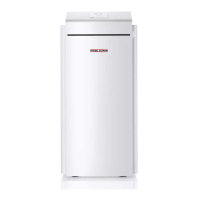
